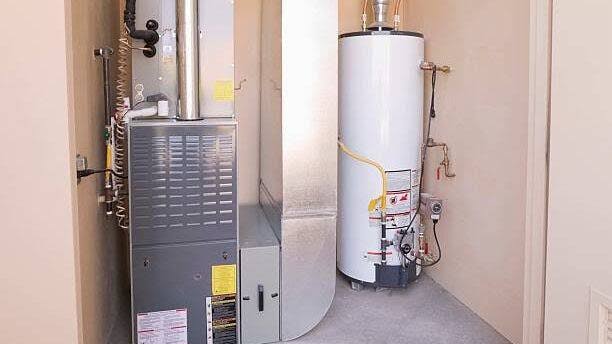Your heating system in the house should be very efficient during the cold seasons, and one of the critical components in the heating system at your home includes a boiler heat exchanger. For the efficiency of the furnace, the heat exchanger performs the role of changing the heat without the intermingling of the liquid. Like all the mechanical parts, it has a duration and effectiveness and needs proper care to perform at its best.
Understanding the Role of a Wood Boiler Heat Exchanger
Examples of heat exchangers in an outdoor wood boiler system include those that provide efficient heat transfer of hot water, air, or another liquid to your home. It is crucial to ensure that the furnace works well and keeps the indoor atmosphere warm.
Typical Lifespan of a Heat Exchanger
The life of a heat exchanger in an outdoor wood boiler may vary greatly due to several factors. A well-maintained heat exchanger should be able to last 15 to 20 years under normal conditions, while poor maintenance drastically reduces this expected time.
Factors Influencing Heat Exchanger Longevity
Several factors can affect how long your heat exchanger will last:
- Material Selection: The material selected for the construction determines the durability of the heat exchanger. Materials that resist corrosion can give it an added life.
- Operating Conditions: Extreme temperatures, pressure changes, and the fluid quality and characteristics passing through the system can be a factor in affecting the exchanger’s life span. Adverse conditions will increase the wear and tear.
- Maintenance: It involves regular cleaning, inspections, and timely repairs that help in identifying and avoiding problems before great damage is caused.
- Dismal Accumulation: One of the usual problems linked to sediment accumulation gives rise to early failures of the heat exchanger. This may stimulate corrosion, reduce efficiency, and start leaking or even complete failure.
Common Heat Exchanger Problems and Their Signs
Knowing the warning signals of a failing heat exchanger will keep you clear of sudden breakdowns. The common warning signs include:
- Cracks: These are some of the general occurrences in a water-to-air heat exchanger. The existence of these cracks leads to leakage of water, and they normally are hard to detect without giving much attention.
- Noisy Sounds: Aside from the humming sound, if you hear a hissing, rattling, or banging noise, this means there is already a crack in the heat exchanger or that erosion of the metal has taken place.
- Reduced Flow of Water: In case sediment has clogged up your heat exchanger, the flow of water will be restricted or even worse, be completely stopped. This would result in poorly heated water in return and increase fuel consumption.
Preventive Maintenance for Your Outdoor Wood Boiler Heat Exchanger
The following tips will help you take good care of your heat exchanger and ensure that it serves for a longer period:
- Water Filter: A filter helps keep sediments out and blocks the entry of blockage into the heat exchanger, which causes severe damage after some time.
- Flushing: The boiler requires regular flushing to clear off its rust and sediment. A full flush once every four years and a “Periodic Flush” once every six months can keep up the efficiency of your system.
- Typical Maintenance: Regularly look for wear and tear in the forms of cracking and leakage; repair as necessary.
The Importance of Using a Filter
Many of these units have required very costly heat exchanger replacements that could have been entirely avoided if proper filtration had been utilized. A good quality filter kit will protect your system against sediment and other contaminants to ensure a long life for your heat exchanger.
By installing a pre-assembled Outdoor Boiler Filter Kit, you will be able to minimize maintenance and make it hassle-free. The kit contains all the necessary fittings, besides a complete filter assembly itself, to ensure your boiler runs efficiently for years to come.
When to Replace Your Heat Exchanger
Even with the best of care, heat exchangers will have to be replaced someday. If you have ongoing leaks, developed some kind of strange noise, or just a general decrease in heating efficiency, it is time to call in a professional for an evaluation.
Conclusion
A wood boiler heat exchanger is one of the major components of your heating system, and its lifetime shall depend on how well you serve the system. If you can easily follow every step as outlined herein, this article may be your key to maintaining your heat exchanger intact and always in a working state for you to offer you warmth in your house. That is where regular inspections, proper filtration, and routine cleaning come in: very important to ensure the life of the exchanger.
To get replacement parts or for any of our products, visit our website at OutdoorBoiler.com or give us a call at 231-861-8200 during business hours.
Related FAQs
- How often should I replace the filter in my outdoor wood boiler?
Filter replacement is typically recommended every 6 months depending on the water quality or as needed.
- Can I clean a cracked heat exchanger, or should it be replaced?
Yes, a cracked heat exchanger usually has to be replaced as repairs are generally not reliable or safe.
- What is a sign that my heat exchanger is failing?
Look for water leaks, unusual noises, and efficiency drops in heating as general signs and symptoms of a failing heat exchanger.
- How can I prevent sediment from building up on my heat exchanger?
Regular flushing and a good water filter go a long way to prevent build-up.
- What type of heat exchanger is best for an outdoor wood boiler?
The best is determined by your specific needs, but the ones used commonly for outdoor wood boilers are finned tube water-to-air heat exchangers and brazed plate heat exchangers.






